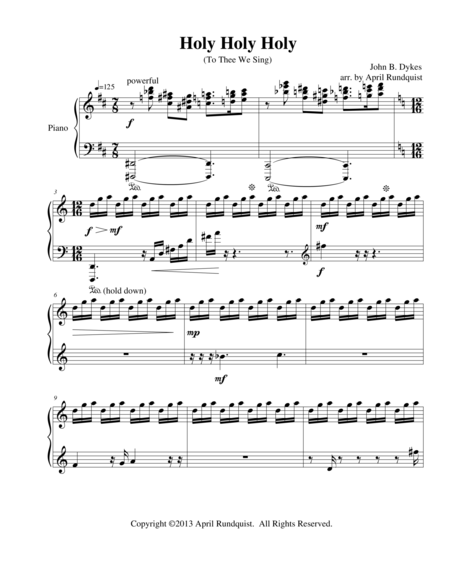Piano Solo - Digital Download SKU: A0.938197 Composed by John Bacchus Dykes. Arranged by April Rundquist. Christian,Sacred. Score. 8 pages. April Ann Rundquist #2033633. Published by April Ann Rundquist (A0.938197). This has always been a very visual arrangement for me with a rough narrative. It starts with the trumpets at the end of the world, the sense of quiet expectation. Wind across a field. It drops off into the silence of outer space. The initial theme presented against that impersonal void, knowing that He's out there, somewhere. Some of this is very difficult for me to describe because this is really about the Triune God, the great creative power, the mover in harmony and cooperation with Himself. The second verse is more grand, the love, the sense of story. And then it gets very, very big, in the way that I AM is always in capitals. Who WAS and IS and evermore shall BE! And in my mind that word BE is light, and just explodes against the blackness into a billion sparkles. And we shrink down to the microcosm for a moment, the wonders of His creative power in the tiny worlds, and it fades to the black of space again. Holy, Holy, Holy, though the darkness hide Thee. The Light that we can't see that would outshine all the stars. More beauty, and then we tumble down the waterfall of Living Water from the Throne of God...in Heaven. The golden palaces and the wonder, the unearthliness, the richness of the life. For a moment it's more simple and I'm reminded of an old hymn being sung in a rustic church. Then a vision of the Cosmic Christ from Revelation giving a benediction, and we're plunged into the chorus of Heaven, the new song of the 144,000. (this part sounds really good on an acoustic piano because the sound physically builds on itself) And it ends as it began...
